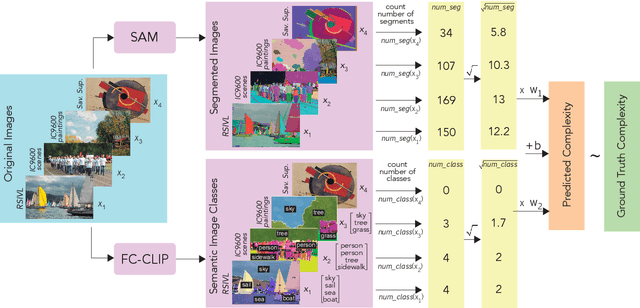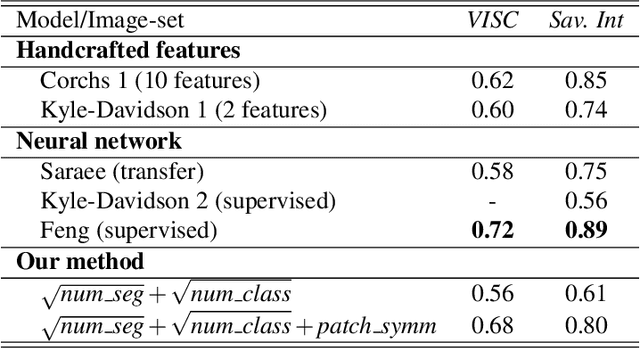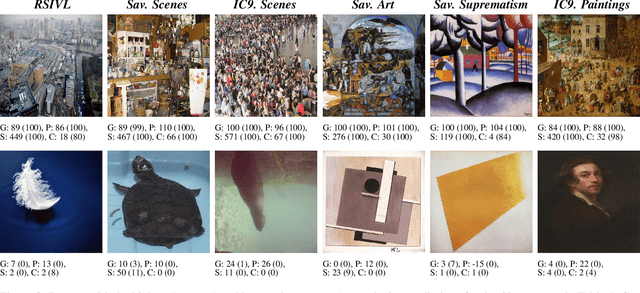Aenne Brielmann
Simplicity in Complexity
Mar 05, 2024



Abstract:The complexity of visual stimuli plays an important role in many cognitive phenomena, including attention, engagement, memorability, time perception and aesthetic evaluation. Despite its importance, complexity is poorly understood and ironically, previous models of image complexity have been quite \textit{complex}. There have been many attempts to find handcrafted features that explain complexity, but these features are usually dataset specific, and hence fail to generalise. On the other hand, more recent work has employed deep neural networks to predict complexity, but these models remain difficult to interpret, and do not guide a theoretical understanding of the problem. Here we propose to model complexity using segment-based representations of images. We use state-of-the-art segmentation models, SAM and FC-CLIP, to quantify the number of segments at multiple granularities, and the number of classes in an image respectively. We find that complexity is well-explained by a simple linear model with these two features across six diverse image-sets of naturalistic scene and art images. This suggests that the complexity of images can be surprisingly simple.
 Add to Chrome
Add to Chrome Add to Firefox
Add to Firefox Add to Edge
Add to Edge